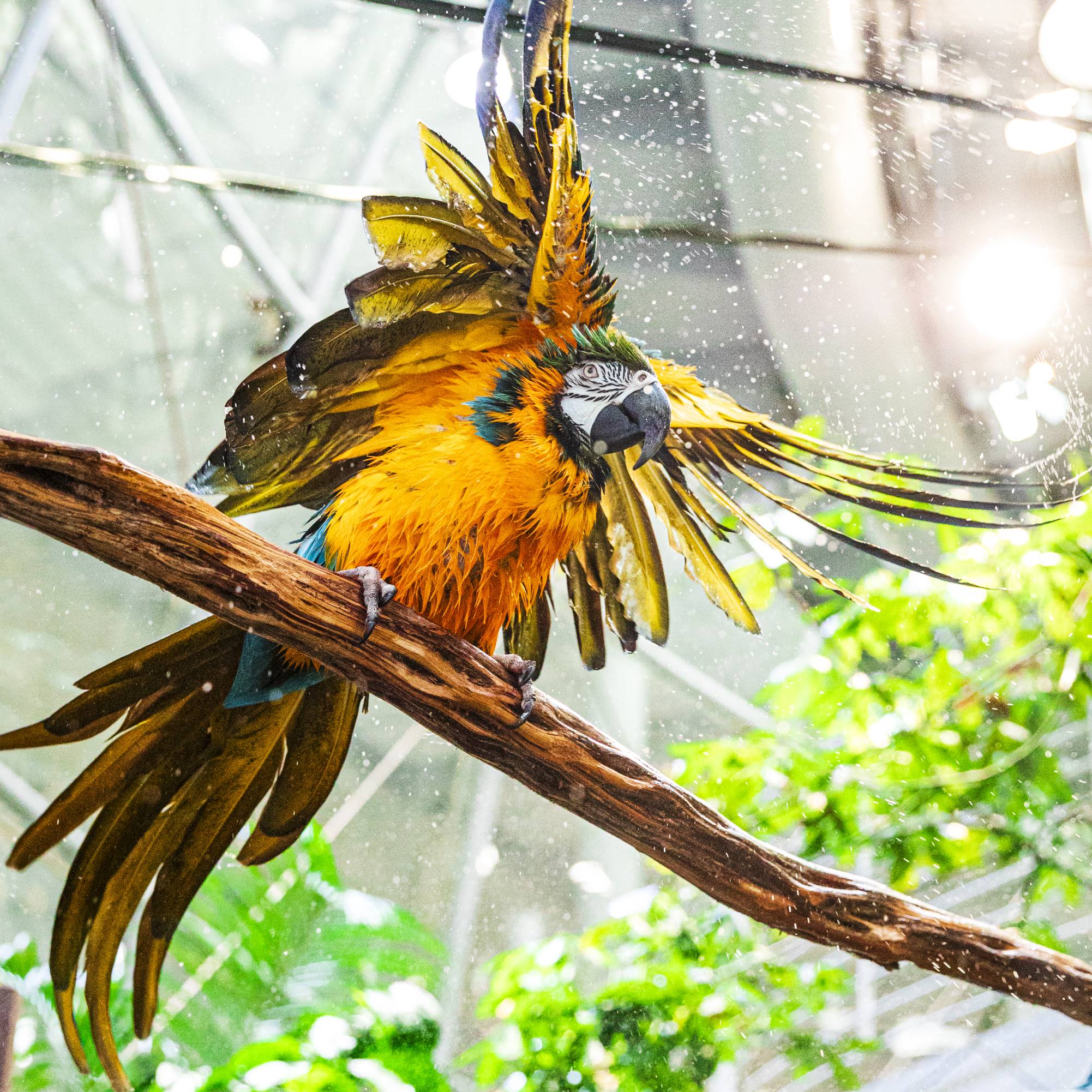– Behavioral enrichment for captive blue-and-gold macaws and its importance for well-being
– How blue-and-gold macaws exhibit natural behaviors when provided with enrichment opportunities
– The anthropomorphic interpretation of blue-and-gold macaws in ‘shampoo commercial’ moments and its educational value
– Strategies employed by zoos to promote naturalistic behaviors in captive macaws
– Conservation implications of environmental enrichment for blue-and-gold macaws and their wild counterparts
Behavioral enrichment, including the charismatic blue-and-gold macaw, is pivotal for captive animals’ physical and psychological health. These intelligent and sociable birds are native to the forests of tropical South America but are also popular residents in zoological parks around the world. Within controlled environments, enrichment practices are essential for encouraging natural behaviors that these birds would display in the wild.
One might witness moments at a zoo where blue-and-gold macaws engage in activities that evoke an image of them starring in a ‘shampoo commercial.’ Such scenes typically involve the macaws preening meticulously, the sun catching their resplendent blue and yellow plumage. At the same time, they arch their necks and flutter their wings as if they were showing off in front of a camera. These scenes are not just delightful to watch, but they also have a deep, functional significance for the animals involved.
Preening, among other behaviors, is part of the natural repertoire of the blue-and-gold macaw. In their natural habitat, these birds preen to maintain their feather condition, which is crucial for thermoregulation, waterproofing, and flight. In the context of a zoo, providing macaws with opportunities to preen serves not only their physical health but also stimulates them mentally. Caretakers often introduce novel items like natural brushes or misting showers to encourage this behavior, making routine grooming an enriching and enjoyable experience.
These enrichment practices reflect a deep understanding of the macaws’ needs and natural behaviors. They require frequent social interaction, mental stimulation, and the opportunity for physical activity. Zookeepers often create dynamic environments that challenge the birds and encourage problem-solving. Foraging toys, puzzle feeders, and habitat modifications encourage the birds to investigate and interact with their environment, fulfilling their innate curiosity and cognitive needs.
The phenomenon of anthropomorphizing animal behaviors—such as likening macaw preening to human haircare in a commercial—has educational potential. It allows viewers to relate to the animals, fostering empathy and a greater interest in their natural history and conservation. By drawing parallels with human behaviors, educators can engage audiences in discussions about the birds’ natural habitats, dietary needs, social structures, and the threats they face in the wild, such as habitat destruction and the illegal pet trade.
Effective zoo management involves strategic planning for the comprehensive care of animals, including meticulous attention to their enrichment needs. Facilities that house blue-and-gold macaws strive to replicate elements of the birds’ natural ecosystems and allow for a wide range of behaviors. This involves considering perch placement, foliage, diet variety, and auditory stimuli. Zoos must continually adapt enrichment protocols to keep the intelligent birds engaged, prevent boredom, and promote overall welfare.
The broader implications for wildlife conservation are significant. Environmental enrichment for blue-and-gold macaws enhances the lives of captive birds and serves as a model for improving welfare and outcomes for other captive wildlife. Moreover, it reinforces the importance of preserving these behaviors by conserving their natural habitats. By presenting captive macaws as ambassadors for their wild counterparts, zoos raise awareness about these majestic birds’ perils and the need for sustainable conservation efforts.
As such, enrichment is not merely an optional component of farming. It’s integral for the health and vitality of the blue-and-gold macaws. Through enrichment, these birds showcase their intense beauty and fascinating behaviors to the public, promoting a connection between humans and nature. The upshots of well-planned enrichment are multifaceted, leading to healthier birds, more engaged and educated zoo visitors, and a heightened commitment to conserving these animals in the wild.
In sum, enrichment practices like those that give blue-and-gold macaws their ‘shampoo commercial’ moments are much more than entertainment—they are a crucial part of modern zoo management and wildlife conservation efforts. Such practices help provide captive birds with a quality of life that sustains and celebrates their innate wildness, making our blue-and-gold macaws healthy and happy and powerful advocates for their species across the globe.
*****
Source Description
Every once in a while, as enrichment, our blue-and-gold macaws pretend they’re in a shampoo commercial.


